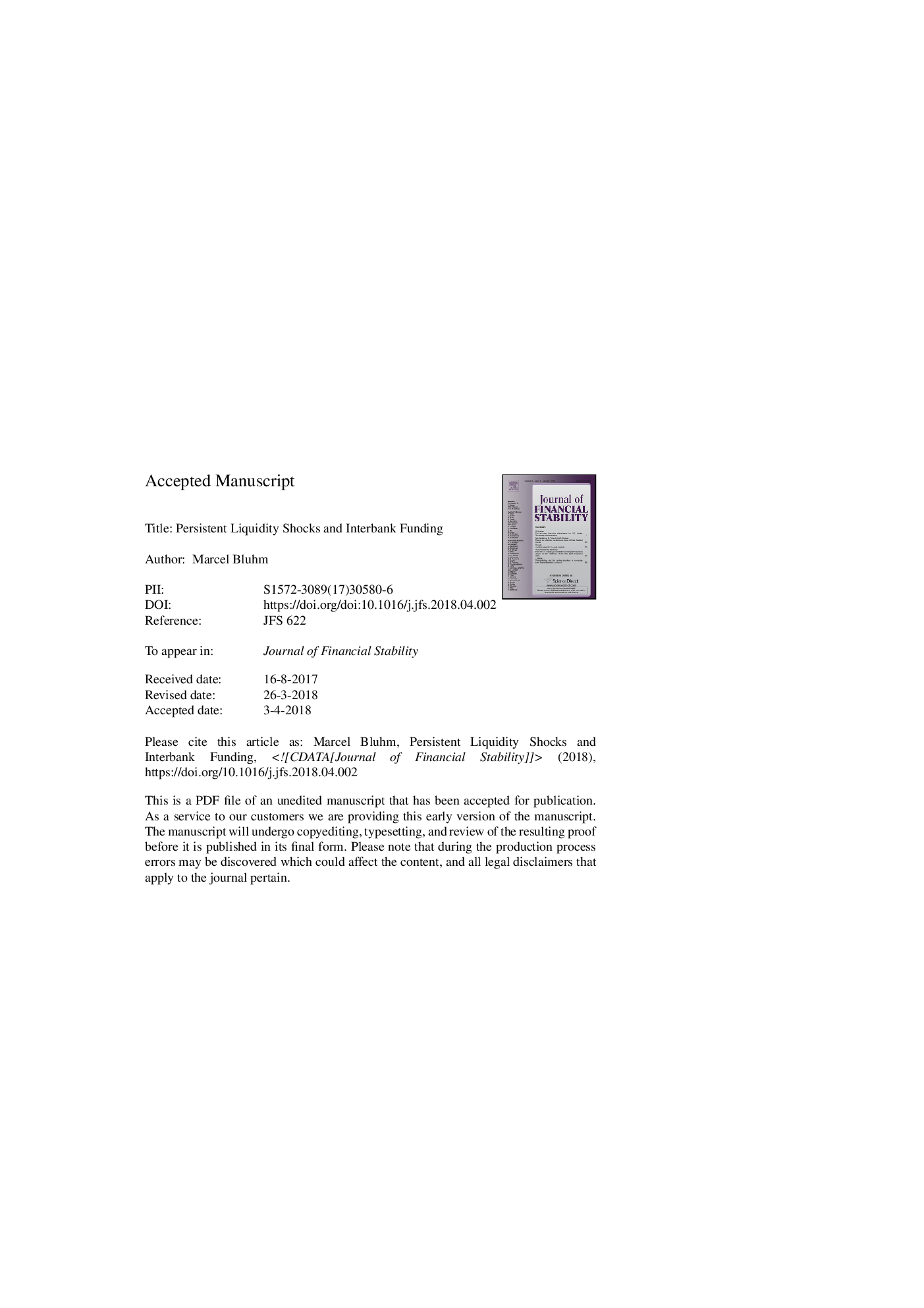| Article ID | Journal | Published Year | Pages | File Type |
|---|---|---|---|---|
| 7409081 | Journal of Financial Stability | 2018 | 40 Pages |
Abstract
I develop a theory of multiple maturity segments on the interbank market based on the persistence of liquidity shocks and banks' liquidity management. The developed framework is embedded in a micro-founded network model, which features interbank funding as an over-the-counter phenomenon and replicates financial system phenomena of network formation, monetary policy transmission, and endogenous money creation. This setup is used to shed light on the interbank market's role for allocation and stability in the financial system. I show that the amount of interbank funding depends on the persistence and magnitude of liquidity shocks, as well as banks' liquidity requirement. Optimal monetary policy experiments show that while interbank funding allows for considerably higher loan provision to the real economy, its term segment, by increasing the size of the interbank market, reduces that effect. Furthermore, the central bank's interest rate policy can effectively mitigate systemic risk and allow for higher sustainable loan supply of the real economy in regimes with lenient capital requirements. However, it is less effective in stimulating loan provision in more restrictive regulatory regimes.
Related Topics
Social Sciences and Humanities
Economics, Econometrics and Finance
Economics, Econometrics and Finance (General)
Authors
Marcel Bluhm,
